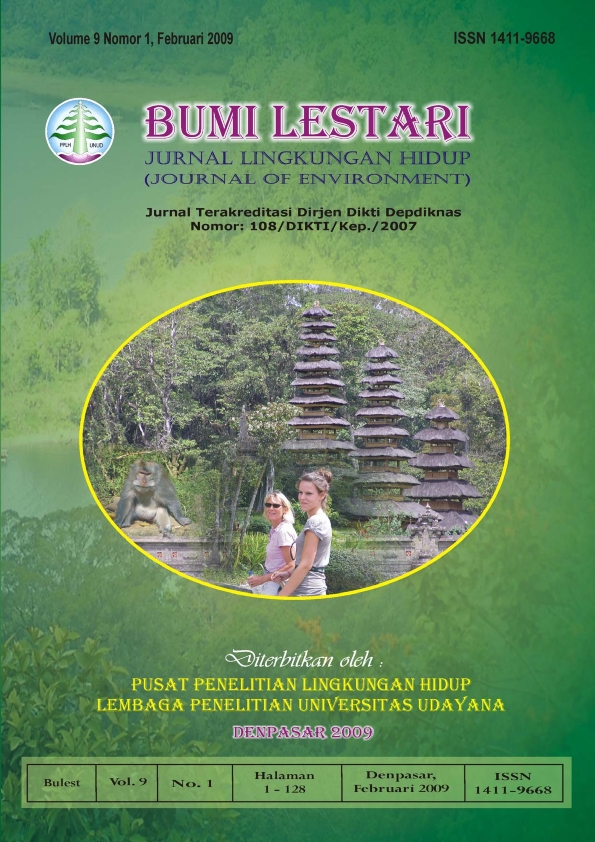BIODEGRADASI DODECYL BENZENA SULFONAT DALAM SISTEM LUMPUR AKTIF
Abstract
The research about biodegradation of dodecyl benzene sulfonat ( DBS) has been conducted by using bacterium of sediment of Tebe River in Denpasar. Goals of research were to determine curve of growth bacterium in DBS media and its ability to degradation of DBS. Determination of research consist of exponential phase of bacterium, measurement of volatyl suspended solid (VSS), biologycal oxygen demand (BOD), and biodegradation rate of DBS. Isolate that isolation from Tebe River of Denpasar was seed in DBS media (1g of DBS ;1,5g of NPK ; and 0,2 g of MgSO4.7 H2O to dissolved in 1 L aquadest) with control of growth by measurement of VSS during 12 hours. Active mud that seeding was used to treat of waste water with DBS content. Counted 200 ml active mud in exponential phase, enhanced by 800 ml of waste with DBS content. Measure value of BOD and DBS content, and analysis its rate of decrease. Result of the research indicate that exponential phase of bacterium at an hour of eight with value of VSS equal to 1421,73 mg /l. During treatment of waste, value of BOD and DBS has decreased from initial. Rate of BOD decrease happened to 3 days that following equation is y = - 0,167 X + 3,932 with rate of decrease is 0,167 mg /l. Rate of degradation of DBS quickly, is indicated to 3 days by following fast equation is y = - 0,306X + 6,714 with rate of degrade equal to 0,306 mg /l.Downloads
Keywords
Authors who publish with this journal agree to the following terms:
- All articles published by Bumi Lestari Journal of Environment and Environmental Reseach Center Udayana University are made available under an open access license worldwide immediately. This means everyone has free and unlimited access to the full-text of all articles published in Bumi Lestari Journal of Environment, and everyone is free to re-use the published material given proper accreditation/citation of the original publication. Open access publication is supported by authors' institutes or research funding agency by payment of a comparatively article processing charge for accepted articles (See Author Fees). Bumi Lestari Journal of Environment and Environmental Reseach Center Udayana University publish articles under the Creative Commons Attribution License.
- Authors are able to enter into separate, additional contractual arrangements for the non-exclusive distribution of the journal's published version of the work (e.g., post it to an institutional repository or publish it in a book), with an acknowledgement of its initial publication in this journal.
- Authors are permitted and encouraged to post their work online (e.g., in institutional repositories or on their website) prior to and during the submission process, as it can lead to productive exchanges, as well as earlier and greater citation of published work (See The Effect of Open Access).





